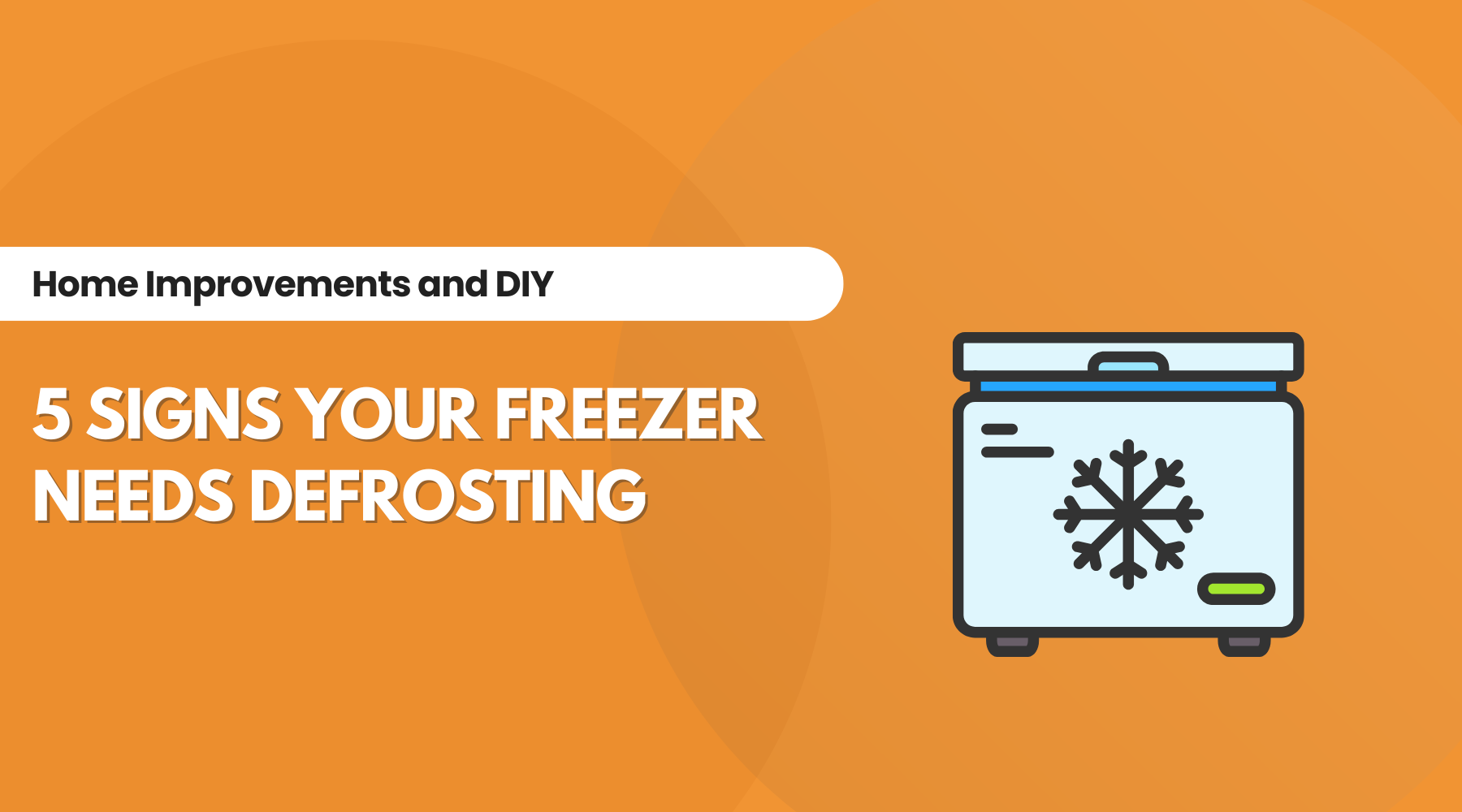
5 Signs Your Freezer Needs Defrosting
Is your freezer not performing like it used to? A build-up of frost could be to blame. Over time, excessive ice can reduce efficiency, waste energy, and even damage your appliance. Knowing when to defrost your freezer is key to keeping your food fresh and your electricity bills low. In this post, we’ll explore 5 clear signs your freezer needs defrosting, so you can stay ahead of the problem and keep your kitchen running smoothly.
1. There’s More Ice Than Food in Your Freezer
If your freezer looks more like an igloo than a food storage unit, it’s definitely time to defrost. When ice build-up takes over shelves, walls, or even seals, it not only takes up valuable space but also affects how well your freezer can maintain a consistent temperature. In extreme cases, frost can cover vents or fans, forcing your freezer to work harder — which leads to higher energy bills and reduced appliance lifespan.
A good rule of thumb? If you can’t see or easily access your food without chipping away at the ice, it’s time for a full defrost. Excess frost build-up is often a result of frequent door openings, worn door seals, or humid air entering the freezer — all of which can cause moisture to freeze and accumulate over time.
Defrosting your freezer regularly not only improves performance but also makes it easier to organise your frozen foods and reduce waste. So if ice is outnumbering your groceries, don’t wait — clear it out and give your appliance a fresh start.
2. The Freezer Door Won’t Close Properly
If your freezer door won’t close all the way, or it pops open on its own, that’s a clear sign of excessive frost build-up. Ice can accumulate along the door seals or inside the hinges, preventing a tight seal. When this happens, warm air enters your freezer, causing even more frost to form — creating a vicious cycle that reduces efficiency and risks food spoilage.
A door that doesn’t close properly also forces your freezer to run constantly in an attempt to maintain the correct temperature. This can increase energy consumption, stress the compressor, and shorten the overall life of your appliance.
Sometimes, the issue isn’t just ice — worn-out or cracked gaskets (the rubber seals around the door) can also be a culprit. But if you’re seeing ice build-up around the edges or hearing a subtle “pop” when the door tries to seal, it’s time to defrost your freezer and inspect the door seals.
3. Your Food Has Now Become One with the Freezer
If your frozen peas are frozen to the freezer wall—or your ice cream is stuck in a block of frost—you’ve got a problem. When frost build-up causes food items to stick to shelves, walls, or each other, it’s a clear sign your freezer needs defrosting.
This kind of ice overload not only makes it hard to grab what you need, but it also compromises food safety and quality. Stuck or iced-over food often means that moisture is entering the freezer (usually through frequent door openings or damaged seals), which then freezes around whatever’s nearby. This can lead to freezer burn, affect taste and texture, and make it nearly impossible to organise your frozen goods.
If you have to chisel out a pizza or pry a bag of veggies from the back corner, it's time to hit pause and fully defrost your freezer. You’ll free your food, improve efficiency, and make mealtime way less frustrating.
4. It Isn’t Even Cold Anymore
One of the most obvious — and most urgent — signs your freezer needs defrosting is when it stops feeling cold. If you open the door and the air inside feels cooler than freezing, or your food is starting to soften or thaw, excessive frost may be interfering with your freezer’s ability to maintain the right temperature.
When ice builds up around internal components like evaporator coils or vents, it can block proper airflow and prevent the unit from cooling efficiently. This not only risks spoiling your food, but it also signals that your freezer is working overtime — and still falling short.
A freezer that isn’t staying cold can quickly become a costly problem, especially if you’re dealing with perishable items or frozen meals. If adjusting the thermostat doesn’t help, a full defrost may be your best first step to restore performance.
5. Does It Make Weird Sounds?
Unusual noises coming from your freezer—like humming, buzzing, or clicking—can be a warning sign that it needs defrosting. Excess frost buildup can obstruct the internal fans or put extra strain on the compressor, causing your freezer to work harder than normal. This can result in loud or irregular sounds that you don’t usually hear.
Ignoring these noises can lead to more serious mechanical problems and costly repairs down the line. Regularly defrosting your freezer helps keep internal parts clear and running smoothly, reducing the chances of strange sounds and improving overall efficiency.
If you hear persistent or loud noises, it’s a good idea to defrost your freezer and inspect the vents and fans. If the sounds continue after defrosting, consider consulting a professional technician to check for deeper mechanical issues.
How to Defrost Your Freezer: Step-by-Step Guide
Step 1: Prepare Your Freezer
-
Unplug your freezer from the power source to avoid any electrical hazards.
-
Remove all the food and store it in a cooler or insulated bags to keep it frozen while you work.
-
Take out removable shelves, drawers, and baskets to make cleaning easier.
Step 2: Let the Ice Melt Naturally
-
Leave the freezer door open to allow the ice to melt naturally.
-
Place towels or a shallow pan at the bottom to catch melting water and avoid messes.
-
Avoid using sharp objects to chip away the ice as this can damage your freezer’s interior.
Step 3: Speed Up the Defrosting (Optional)
-
Place a bowl of hot water inside the freezer to speed up melting. Close the door partially to trap steam.
-
Replace the water as it cools, but always keep an eye on the process to prevent water damage.
Step 4: Clean the Freezer Interior
-
Once the ice has melted, wipe down the interior surfaces with a solution of warm water and mild detergent.
-
Dry everything thoroughly to prevent new frost build-up.
Step 5: Check Door Seals and Components
-
Inspect the door seals (gaskets) for cracks or damage and clean them with a damp cloth.
-
Make sure vents and fans are clear of debris.
Step 6: Reassemble and Restart
-
Put shelves, drawers, and baskets back into place.
-
Plug your freezer back in and close the door.
-
Wait for the freezer to reach the proper temperature (usually below -18°C) before restocking with food.
Regularly defrosting your freezer not only keeps your appliance running efficiently but also helps you save on energy bills and prevents food spoilage. By paying attention to these five key signs and following the simple defrosting steps, you can extend the life of your freezer and keep your frozen foods fresh and tasty. Don’t wait until frost takes over—take action today and enjoy a well-functioning freezer all year round!
